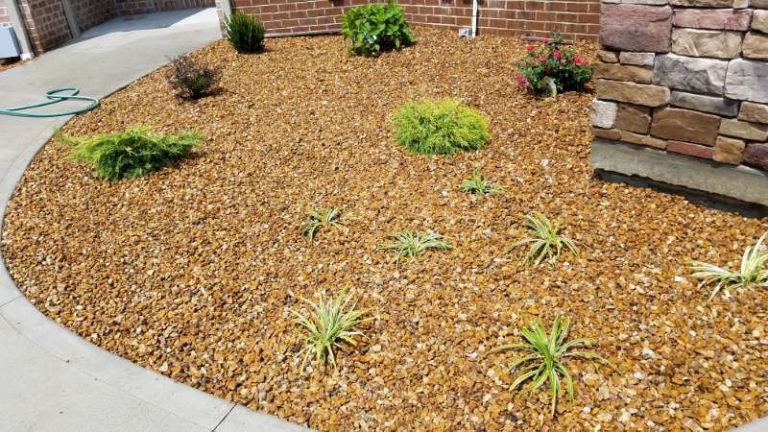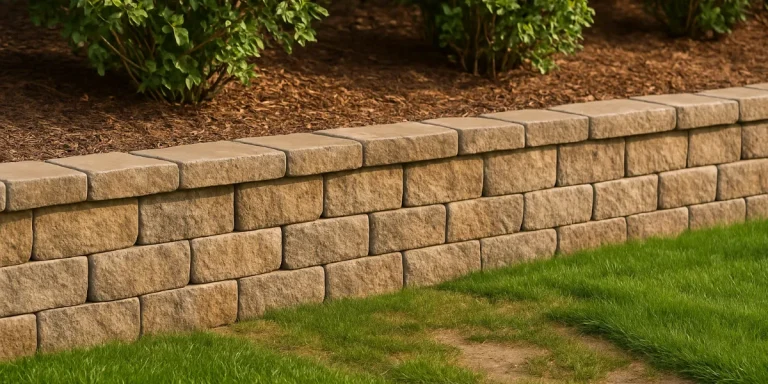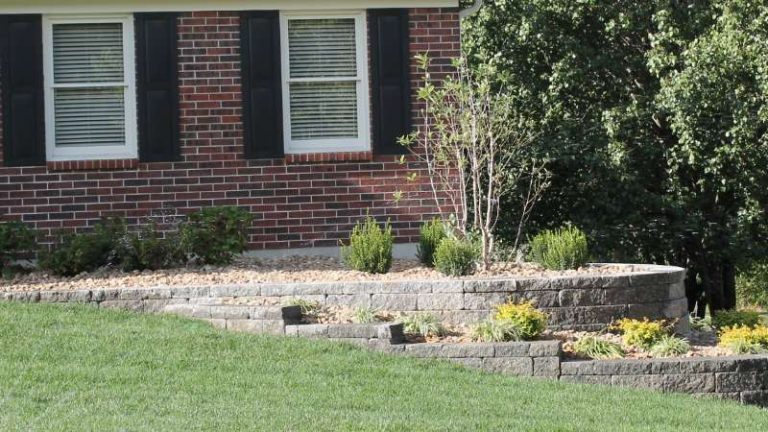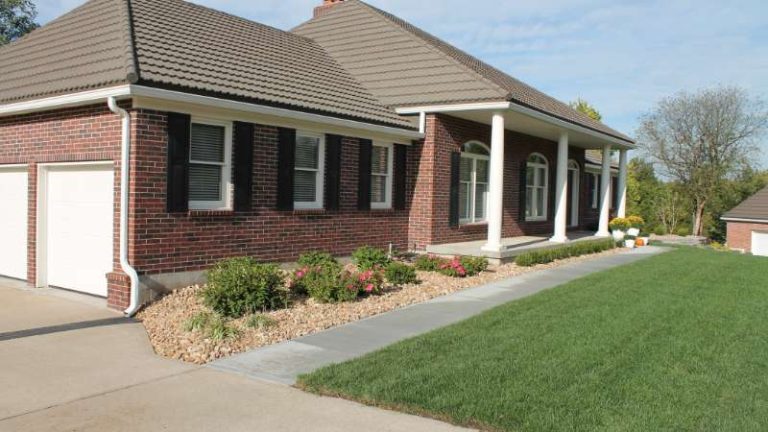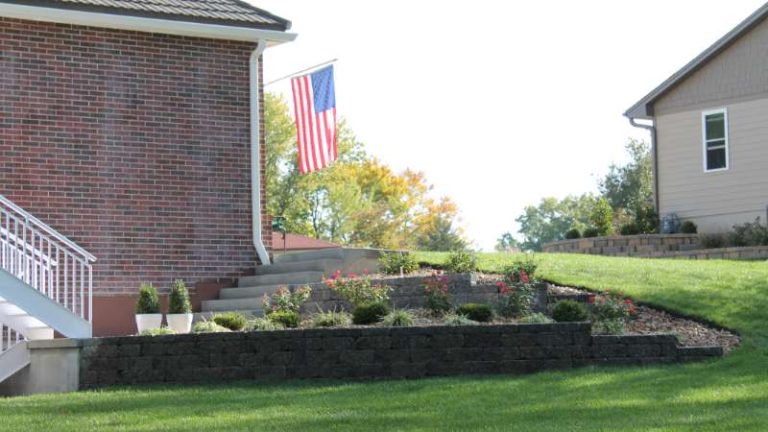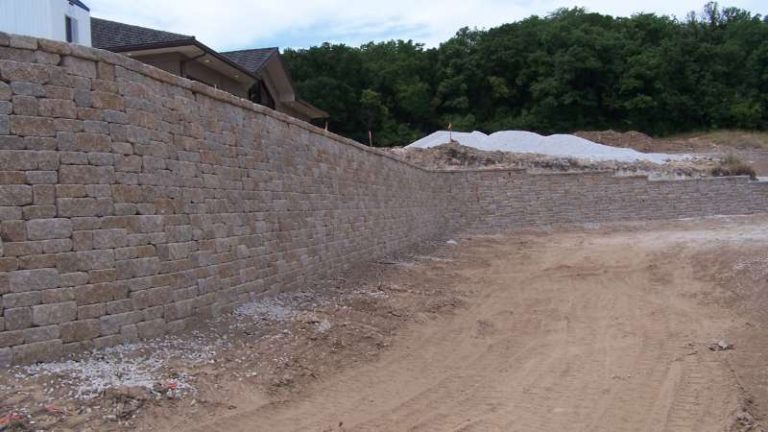Does My Lawn Need Lime? Signs of Soil pH Trouble
A healthy lawn starts with healthy soil—and in Missouri, one of the most common soil issues we see is improper pH. If your grass looks dull, thin, or refuses to green up no matter how much you water or fertilize, the issue might not be nutrients at all. It could be your soil pH.
At S&T Landscaping, we help homeowners across Sedalia and surrounding areas fix soil problems like these using targeted lime applications and science-backed lawn care practices. Here’s what you need to know.
What is soil pH and why does it matter?
Soil pH is a scientific measurement that indicates how acidic or alkaline your soil is. It’s measured on a scale from 0 to 14, with 7 considered neutral. Values below 7 are acidic, while those above are alkaline. For most cool-season turfgrasses common in Central Missouri—such as tall fescue, Kentucky bluegrass, and perennial ryegrass—the ideal soil pH range is between 6.0 and 7.0.
When your lawn’s pH falls outside this range, even the most well-maintained yard can struggle. That’s because pH plays a critical role in how your grass interacts with the soil—and determines whether your investments in fertilizer, seeding, or weed control will pay off.
Why this matters to your lawn:
-
- Nutrient availability drops sharply outside the ideal pH range
Essential nutrients like nitrogen, phosphorus, and potassium become chemically locked up in overly acidic or alkaline soil. This means your lawn can't absorb them, no matter how much fertilizer you apply. - Fertilizer and weed control products may become less effective
If the pH is too low, even premium fertilizers won’t perform as intended. Herbicides may also lose their effectiveness, allowing invasive weeds to take hold. - Poor pH slows down root growth and microbial activity
Beneficial soil microbes that help break down organic matter and support root development struggle in imbalanced pH conditions. This can lead to stunted growth and an overall unhealthy lawn. - Thin grass and weak turf become vulnerable to disease and drought
Lawns that are nutritionally starved due to pH imbalance are more likely to suffer during heatwaves, extended rain, or fungal outbreaks.
- Nutrient availability drops sharply outside the ideal pH range
At S&T Landscaping, we often see homeowners in areas like Sedalia, Benton County, and the Lake of the Ozarks dealing with acidic clay soils that quietly sabotage their lawn efforts. The good news? Soil pH can be corrected—our lime applications, paired with professional lawn care services, are designed to restore the balance and create healthier, more resilient turf.
If you suspect pH might be part of your lawn’s problem, we can help. Our science-backed approach includes soil testing, core aeration, and targeted fertilization to unlock your lawn’s full potential.
Signs your lawn may need lime
Soil pH issues often fly under the radar because they can mimic other lawn problems like nutrient deficiencies or pest damage. However, when your grass isn't responding to care the way it should, it's time to look deeper—specifically, at your soil chemistry.
Here are some of the most common warning signs that your lawn may benefit from a lime application:
-
- Persistent moss growth, especially in shady, damp, or compacted areas
Moss tends to thrive in acidic conditions. If you notice moss taking over parts of your yard, especially despite mowing and sunlight access, low pH could be the underlying cause. - Yellowing or pale grass, even after fertilization
If you’ve applied high-quality fertilizer and your lawn still looks washed out, the problem may not be the nutrients—it could be that your soil’s pH is too low for your grass to absorb them effectively. - Thinning turf and patchy bare spots
Acidic soils can stress out cool-season grasses like fescue and bluegrass, making them less vigorous and more susceptible to disease or drought. If your lawn is gradually becoming thinner or showing random bald patches, poor pH could be contributing. - Increased weed pressure, particularly from species like clover, plantain, and ground ivy
Many common broadleaf weeds tolerate or even prefer acidic soil conditions. If you’ve noticed more weeds than usual—even with a proper weed control plan in place—lime might be needed to shift the pH back in favor of healthy grass. - Fertilizer not working as expected
Lawns with pH below 6.0 can have trouble utilizing essential nutrients like nitrogen, phosphorus, and potassium—even if those nutrients are present in the soil. You may be wasting money on fertilizers that your lawn can’t fully use.
- Persistent moss growth, especially in shady, damp, or compacted areas
If you’ve been following a solid lawn care routine—mowing properly, watering consistently, fertilizing on schedule—but your grass still looks weak or unhealthy, soil pH imbalance is a likely suspect. That’s where S&T Landscaping comes in.
Our team offers detailed soil testing, custom lime applications, and long-term lawn improvement plans that deliver real, visible results. We combine expertise with local experience to identify what’s holding your lawn back—and fix it from the ground up.
How we test and correct soil pH issues
At S&T Landscaping, we take a science-based, results-driven approach to diagnosing and correcting pH issues that impact lawn health. Whether you're dealing with yellowing grass, weak growth, or patchy turf, our goal is to identify the root cause and implement the most effective solution—often starting with your soil.
Here’s how we evaluate and resolve pH imbalances in Missouri lawns:
1. Conduct a comprehensive soil test
The first step is to understand exactly what’s happening beneath the surface. Our team collects soil samples from multiple locations across your yard—this ensures we account for any variability in your lawn’s soil conditions.
We send those samples to a professional, accredited lab to test for:
-
-
- pH levels
- Macronutrients (Nitrogen, Phosphorus, Potassium)
- Micronutrient content
- Organic matter
- Cation exchange capacity (CEC), which affects nutrient availability
-
This detailed analysis gives S&T Landscaping a clear roadmap for improving your lawn through customized lawn care treatments, not guesswork.
2. Apply the correct lime product based on test results
If the soil test reveals that your pH is too low (acidic), we select the appropriate lime type and application rate to safely raise the pH. Not all lime products are created equal—and choosing the wrong one can lead to uneven results or even nutrient lockout.
We typically use:
-
-
- Pelletized lime for fast, efficient application with minimal mess
- Fine-ground agricultural lime for deeper, longer-term pH correction
-
For properties with compacted soil or poor drainage, we may also recommend core aeration or topdressing with compost to enhance lime absorption and improve overall soil structure.
3. Adjust your lawn care strategy for sustained improvement
Fixing soil pH isn’t a one-time solution—it’s part of a larger, integrated lawn maintenance plan. Once the pH is within the healthy range, we adjust your care regimen to maximize results.
This may include:
-
-
- A tailored fertilization schedule that works with your soil chemistry
- Overseeding with hardy, pH-tolerant grass varieties
- Weed control measures that won’t be neutralized by poor pH
- Irrigation adjustments to ensure proper moisture and nutrient uptake
-
In cases where poor pH has allowed moss, weeds, or fungus to thrive, we also offer weed control, fungus treatment, and lawn renovation services to restore the health and appearance of your yard from the ground up.
No matter the size or condition of your property, S&T Landscaping brings decades of local experience, commercial-grade equipment, and a commitment to detail that gets lasting results.
When is the best time to lime your lawn?
The best time to apply lime in Central Missouri is in the fall or early spring. Lime takes time to break down and adjust soil pH, so applying during these seasons gives your lawn time to benefit before peak growing periods.
-
- Fall: Prepares your lawn for healthy spring growth
- Early spring: Ensures soil is in optimal condition for the growing season
We avoid applying lime during summer heat or winter dormancy, when absorption and results are limited.
Can lime fix every lawn problem?
No—lime only corrects acidic soil. If your pH is already in the proper range, lime won’t improve your lawn and can even create new issues. That’s why soil testing is so important. In many cases, problems with compaction, poor drainage, or nutrient deficiencies may be the real issue, and we’ll recommend the right solution.
For example, one homeowner in Pettis County assumed they needed more fertilizer. After a quick soil test, we found their pH was extremely low—around 5.2. A targeted lime application brought it into balance, and within a month, their lawn greened up beautifully without extra fertilizer.
Proudly serving Sedalia and surrounding Missouri communities
S&T Landscaping provides professional lawn care, soil testing, and turf management services in:
-
- Sedalia
- Pettis County
- Benton County
- Lake of the Ozarks region
- Warsaw
- Osage Beach
- Lake Ozark
- Camdenton
- Sunrise Beach
- Laurie
- Surrounding Central Missouri communities
Ready to find out if your lawn needs lime?
Don’t waste time and money on guesswork. If your lawn isn’t responding to watering or fertilization, soil pH could be the hidden issue.
Call S&T Landscaping today to schedule a soil test and professional lawn evaluation. We’ll help you determine if lime is the right solution and develop a plan to restore your turf’s health and color—just in time for the next growing season.
We proudly serve homeowners across Sedalia, the Lake of the Ozarks, and surrounding areas with expert lawn care solutions rooted in real results.


